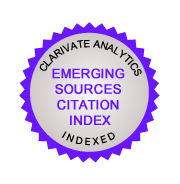Indoor Air Quality Assessment Based on Human Physiology - Part 2. Limits
DOI:
https://doi.org/10.14311/494Keywords:
indoor air quality, odors, air changes estimationAbstract
In order to evaluate indoor air quality in practice it is necessary to establish limits, or more exactly, tolerable ranges for unadapted and adapted persons. The optimal value overwhelmingly corresponds to PD 20 %. A better value of PD 10 % could be prescribed for asthmatics and for persons with increased requirements, i.e. those allergic to the environment and operators in airport control towers and atomic power stations. A worse value PD 30 % could be accepted as an admissible value. These values differ for unadapted and adapted persons (as introduced by BSR/ASHRAE 62-1989 R). The long-term tolerable value is the end of SBS range (for CO2 it is based on USSR space research, for TVOC on Molhave). The short-term tolerable value is the beginning of the toxic range (for CO2 it is taken from British Guidance Note EH 40/90; for TVOC from Molhave).Downloads
Downloads
Published
2003-01-06
Issue
Section
Articles
How to Cite
Jokl, M. V. (2003). Indoor Air Quality Assessment Based on Human Physiology - Part 2. Limits. Acta Polytechnica, 43(6). https://doi.org/10.14311/494



